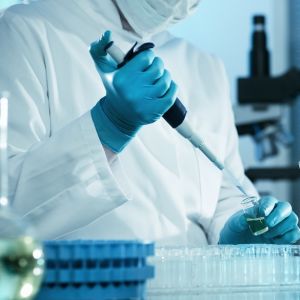Know Whether Your Coating is Antimicrobial Resistant
Posted by Anthony Lewis on June 9th, 2021
Antimicrobial resistance occurs when microbes like bacteria,fungi and viruses evolve over time and create a situation where they hardly respond to treatments making infections tougher to treat and raising the risk of disease spread to severe illness and finally death.Thus it is not enough to talk about antimicrobials rather taking steps to address antimicrobial resistance. In addition, proper care needs to be taken through consultation with an antimicrobial testing lab to ensurebalanced use of antimicrobials.
Amid fast evolution of technology, the rise and spread of antimicrobial resistance is a major concern these days.This could prompt people think of the time when there was no antibiotic and common infections became fatalowing to the absence of effective treatments.Modern research has proved that the frequency of resistant bacteria and resistant genes increase in response to the selective pressure created by the use of antibiotics.
There is enough evidence that inappropriate and excessive use of antimicrobials has created many problems. To take on the issue effectively, a practice of prudent and judicious antimicrobial usage is desperately needed. This can be possible only if suggestions of experienced health care professionals working at proven antimicrobiology laboratory are properly practiced.
If we talk about food processing industries, they can be contaminated with a kind of unwelcome microbes. Thus special efforts are inevitable for the development of coatings intending to improve the antimicrobial efficacy of the facilities. Other major coating considerations include hardness, adhesion to a substrate, and migration of the antimicrobial substance into the food matrix.
Let's discuss the changes on paint due to microbial effect.
Corrosion - Corrosion of plant equipment and of substrates happen from metabolic remains and acid production.
Viscosity change - Polymer dispersion can bethicker or thinner, which is dependent on the effect of increased concentration of acidic byproducts. Increase in viscosity and microbial infection can limit the flow within the factory equipment piping, filters, etc.
Color change - Microbes can also take a dig at color of the product before or after the use. The sulfur-reducing bacteria changes the color of the polymer dispersion or the finished product into black.
PH change - The metabolic by-products often are acidic in nature. The reduced pH will cause destabilization of the polymer dispersion and promote a corrosive environment both in the factory (surface of plant equipment) and once in service (corrosion of substrates).
Gas production - Bacteria can out hydrogen sulfide gas which can be known through different kinds of odors and gas production issues.
Odor production - Bacteria mostly reduce sulfur. Other microorganisms have the potential to produce odors based on their biochemical reactions.
To minimize the impacts of microorganisms on paint, special attention is needed on antimicrobial resistance.
Today the major concern of antimicrobial resistance has pushed the governments of countries across the globe to take effective actions and come up with appropriate guidelines, recommendations and policies concerning prudent use of antibiotics and containment of antimicrobial resistance. However, such initiatives from countries with high incidence of antibiotic-resistant bacteria in food animals are still in infancy. The overarching aim of this evaluation is to delineate the points which need to be carried out urgently to regulate the antibiotic use in animals.
Antimicrobials are used in textiles and non-woven materials used in the manufacture of tents, sporting equipment and outdoor furniture to prevent mold and mildew and preserve wood.
They are used widely in crop protection to avoid rot and mold, Molluscicides (garden snails) as well as in preserving waterborne metalworking fluids used to lubricate cutting edges for milling steel and other metals.
In personal care, they are found in hand sanitizers, wound cleansers, dressings, etc.
The US government regulates antimicrobial products as pesticides, and its Food and Drug Administration regulates antimicrobial products as drugs/antiseptics. As pesticides, antimicrobial products are used on objects such as countertops, toys, grocery carts, and hospital equipment. As antiseptics, antimicrobial products are used to treat or prevent diseases on people, pets, and other living things.
If a product label claims to kill, control, repel, mitigate or reduce a pest, it is a pesticide regulated by the government itself. When manufacturers make this kind of claim on the label, they must include:
• Application instructions that are effective at killing or controlling the pest, and
• First aid instructions, in case of accidental exposure.
Specific to coatings, surfaces where an antimicrobial could be used include:
• Walls and floors in hospitals and other institutions such as schools
• Exterior surfaces prone to mold, algae and mildew
• Ship bottoms (antifouling coatings)
• Public surfaces such as handrails, light switches, etc.
Many of the antimicrobial materials used in coatings can also be employed in composites and plastics.
Due to the lengthy regulatory approval process for new antimicrobial materials, fewer and fewer new products are launched every year. However, a review of the most recent patent applications, indicates that the patents are focused on applications and less on new chemistry. Companies such as Dow Chemical continue to look at lending products in a portfolio to create new products. These blends have a greater use over the pH range in which coatings are used.
Mildew will grow on any untreated surface, as will many types of algae and mold, providing they have the correct nutrients to exist. Due to global regulatory changes, some previously-approved mildewcides as well as other antimicrobials, have been banned from use. This has caused the industry to scramble for replacements.
About Author:
Anthony Lewis is a professional writer having deep interest in scientific innovations. In addition, he has been imparting training on personality development in various institutes as guest faculty. For over three years, Lewis has been penning informative pieces on Antimicrobial testing and bacteria test kits of Biosan Laboratories Inc.


